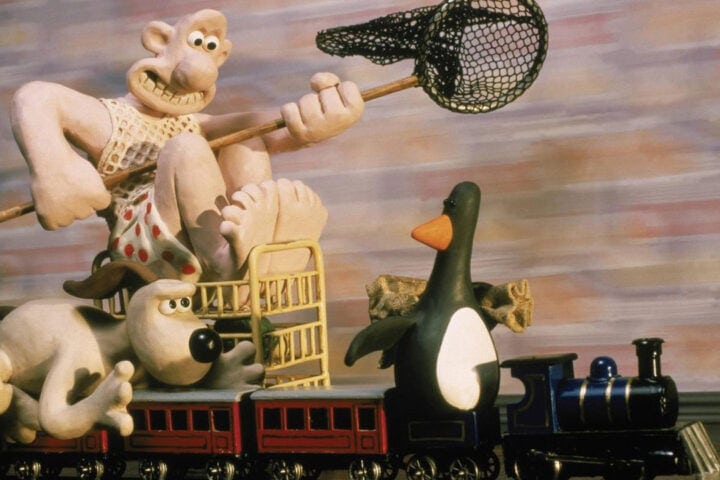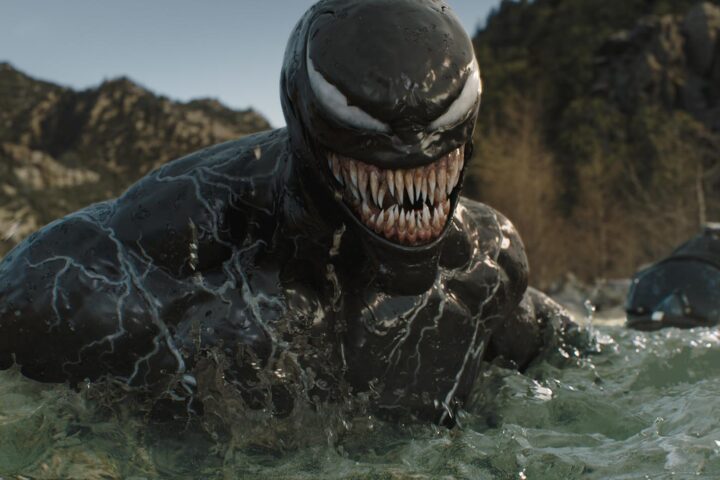It’s been 31 years since Feathers McGraw, the silent, Arsène Lupin-esque penguin from Nick Park’s “The Wrong Trousers,” was caught trying to steal a certain diamond from a city museum. Confined to 10 years of imprisonment inside the city zoo, he’s now back in Nick Park and Merlin Crossingham’s Wallace & Gromit: Vengeance Most Fowl and out for revenge.
Evincing the charm and splendiferously droll humor that’s endeared Wallace and Gromit to audiences since 1989’s “A Grand Day Out,” the film is reliably uncomplicated in its plotting. In the nearly two decades since our titular duo’s last feature outing, The Curse of the Were-Rabbit, societal reliance on smart technology has only ballooned. And, it seems, so has that of the mild-mannered Wallace (Ben Whitehead). Indeed, the eccentric, cheese-obsessed inventor has grown so addicted to building contraptions that he’s become blind to Gromit’s needs and desires, putting a higher premium on ease and convenience than on genuine connection.
The film gets going as Wallace, with just the press of a few buttons and the pull of a few levers, is able to do everything from bathing himself to jamming his toasts. But this wondrous, detail-rich spectacle is also tinged with a bit of sadness, as Wallace has also whipped up an invention that allows him to pet his increasingly isolated dog. Gromit, who enjoys the slow pace of gardening and tending to flowers, cuts a forlorn figure here, but Wallace is so focused on his inventions that he barely notices the delinquent bills that have piled as high as the ceiling.
Things really start to get out of hand when Wallace’s latest invention, the Norbot (Reece Shearsmith), a gnome-robot that can shear and trim down gardens with maximum efficiency, is hacked into by Feathers from afar. Via his own meticulously made inventions, Feathers is able to reprogram the Roomba-like helper into a sociopathic, self-reliant, and self-reproducing minion. Creating an army of cold and creepy landscaper clones, Norbot directs them to take care of neighborhood yards, but not before stealing a truckload of supplies to bust Feathers out of prison. With largely ineffectual Chief Inspector Mackintosh (Peter Kay) and naïve, idealistic new recruit PC Mukherjee (Lauren Patel) on the case, it’s, as always, up to Gromit to save the day.
The film’s underlying message about the potential horrors of A.I. may seem a bit too ripped-from-the-headlines for a franchise that coasts on the slapstick buffoonery that springs almost inevitably from the bucolic patch of England that Wallace and Gromit call home. But that didacticism is also part and parcel with the savviness with which the Aardman films seek to broaden the cinematic literacy of younger audiences. Besides, Vengeance Most Fowl still abounds in riffs on the quotidian that are alternately broad and specific, and always hilarious.
Compared to 2019’s Shaun the Sheep: Farmageddon, which is almost desperate in its pop-culture referentiality, Vengeance Most Fowl is less high concept, largely playing out as a series of kinetic action set pieces. Which isn’t to say that the film doesn’t channel inspiration from the zeitgeist, or that it refuses to tell a good dad joke (in a winking nod to the faux gravitas of broadcast journalists, Diane Morgan’s field reporter character is named Onya Doorstep).
Many of Vengeance Most Fowl’s frames are dotted with Easter eggs, winking homages, and clever, often blink-and-you’ll-miss them verbal sight gags: At one of Norbot’s worksites, a safety sign reads that all of his evil gnomes must wear “pointy hats.” As for the Aardman brand’s signature braiding of the funny and poignant, nowhere is that more evident than in the sight of Gromit, clearly stewing from Norbot’s hostile takeover of his personal space, reading Virginia Woolf’s A Room of One’s Own and John Milton’s Paradise Lost.
As ever, the loving textures of Aardman’s claymation practically warm the heart. There’s an alive-ness that emanates from the characters, in large part due to all those visible fingerprints and indentations on their skins—a tactile counterbalance to a story about humanity’s over-reliance on technology. And yet, for all of the gags and pratfalls and clacking machinery, Vengeance Most Fowl is, like so many of Park’s inventions, most endearing as a reflection of the human heart’s most basic needs. As Wallace races to help Gromit stop Feathers from wreaking more havoc, he starts to understand that there just isn’t anything more valuable than the wealth of a close friendship, something that no machine could ever replace.
Since 2001, we've brought you uncompromising, candid takes on the world of film, music, television, video games, theater, and more. Independently owned and operated publications like Slant have been hit hard in recent years, but we’re committed to keeping our content free and accessible—meaning no paywalls or fees.
If you like what we do, please consider subscribing to our Patreon or making a donation.




